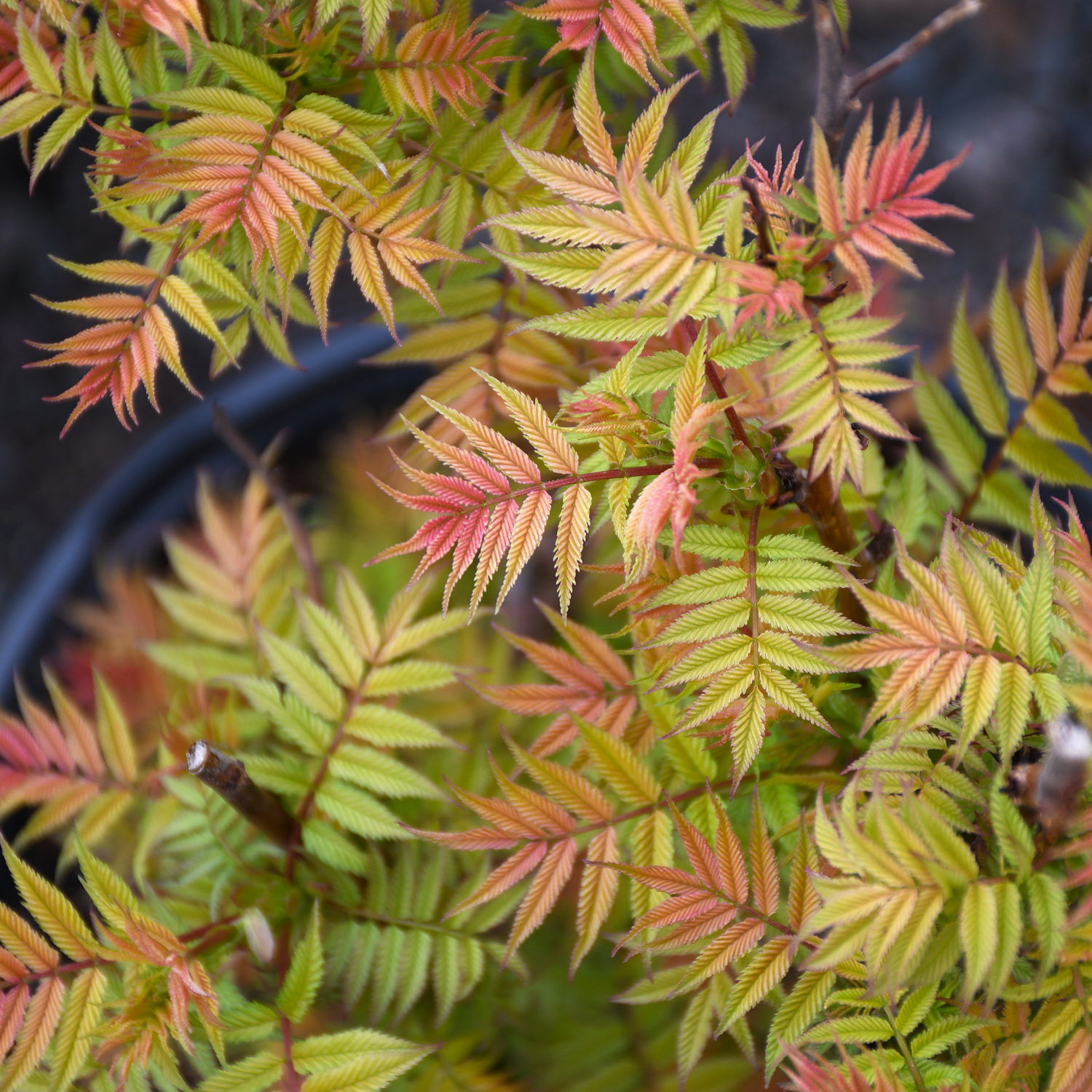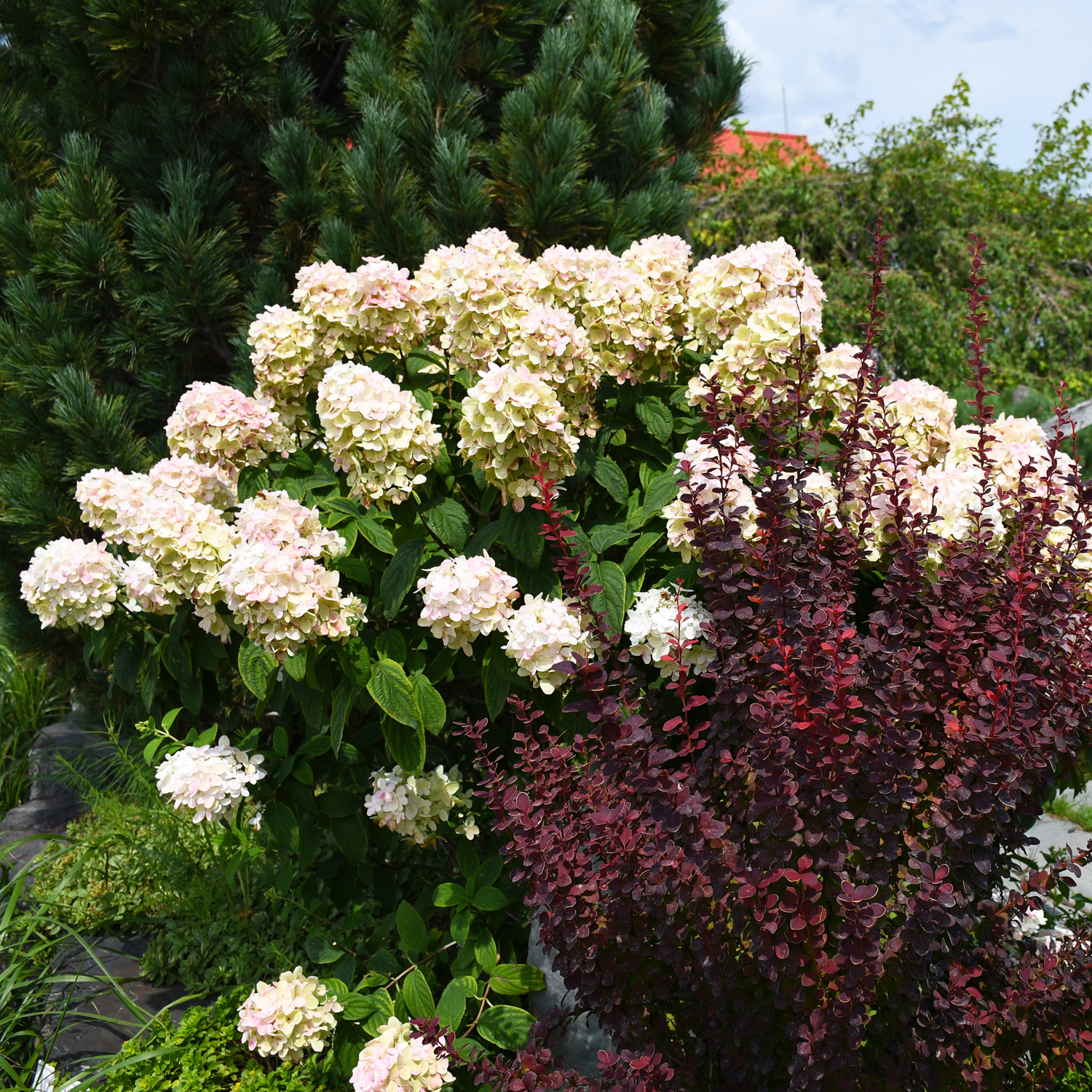Hydrangea, Ruby Slippers 'Oakleaf'




Out of stock
- Sun Preference
- Full-Sun, Part-Sun
Description
A choice compact garden or massing shrub featuring showy spikes of flowers which emerge white and quickly turn deep pink; interesting deep green foliage with mahogany fall color, and papery bark; somewhat coarse in appearance, best used in groupings
Minnesota's Largest Selection of Shrubs
Elevate your landscaping with Gertens' unmatched variety of shrubs! Selecting the right shrubs for your backyard can enhance its beauty and functionality. Consider factors like sunlight, soil type, and mature size when choosing shrubs. For sunny areas, flowering shrubs like roses or hydrangeas can add color and charm. In shady spots, opt for shrubs like azaleas or hostas. Evergreen shrubs provide year-round interest and privacy, while deciduous shrubs offer seasonal color changes. At Gertens, we offer a wide selection of shrubs to suit every backyard need.
Details
Height: 4 feet
Spread: 4 feet
Sunlight:![]()
![]()
![]()
Hardiness Zone: 5a
Other Names: Oak Leaf Hydrangea
Description:
A choice compact garden or massing shrub featuring showy spikes of flowers which emerge white and quickly turn deep pink; interesting deep green foliage with mahogany fall color, and papery bark; somewhat coarse in appearance, best used in groupings
Ornamental Features
Ruby Slippers Hydrangea features bold conical hot pink flowers with white overtones at the ends of the branches from early to mid summer. The flowers are excellent for cutting. It has attractive dark green foliage throughout the season. The lobed leaves are highly ornamental and turn an outstanding burgundy in the fall. The fruit is not ornamentally significant. The peeling brick red bark adds an interesting dimension to the landscape.
Landscape Attributes
Ruby Slippers Hydrangea is a multi-stemmed deciduous shrub with an upright spreading habit of growth. Its relatively coarse texture can be used to stand it apart from other landscape plants with finer foliage.
This shrub will require occasional maintenance and upkeep, and is best pruned in late winter once the threat of extreme cold has passed. It has no significant negative characteristics.
Ruby Slippers Hydrangea is recommended for the following landscape applications;
- Mass Planting
- General Garden Use
- Container Planting
Planting & Growing
Ruby Slippers Hydrangea will grow to be about 4 feet tall at maturity, with a spread of 4 feet. It tends to fill out right to the ground and therefore doesn't necessarily require facer plants in front. It grows at a slow rate, and under ideal conditions can be expected to live for approximately 30 years.
This shrub performs well in both full sun and full shade. It prefers to grow in average to moist conditions, and shouldn't be allowed to dry out. It is not particular as to soil type or pH. It is somewhat tolerant of urban pollution, and will benefit from being planted in a relatively sheltered location. Consider applying a thick mulch around the root zone in winter to protect it in exposed locations or colder microclimates. This is a selection of a native North American species.
Ruby Slippers Hydrangea makes a fine choice for the outdoor landscape, but it is also well-suited for use in outdoor pots and containers. With its upright habit of growth, it is best suited for use as a 'thriller' in the 'spiller-thriller-filler' container combination; plant it near the center of the pot, surrounded by smaller plants and those that spill over the edges. Note that when grown in a container, it may not perform exactly as indicated on the tag - this is to be expected. Also note that when growing plants in outdoor containers and baskets, they may require more frequent waterings than they would in the yard or garden. Be aware that in our climate, most plants cannot be expected to survive the winter if left in containers outdoors, and this plant is no exception. Contact our store for more information on how to protect it over the winter months.
| SKU | Container Size |
| S1730 | #2 Container (2 Gallon) |
* Not all container sizes may be available at this time. See store for details on specific container size availability.
More Information
| Gerten Grown Plants | Gerten Grown Plants |
|---|---|
| Available for Pre-Order | No |
| Sun Preference | Full-Sun, Part-Sun |
| Mature Height (Range) | 2 - 5 feet |
| USDA Hardiness Zone | 5, 6, 7, 8, 9 |
| Common Family Name | Hydrangea |


